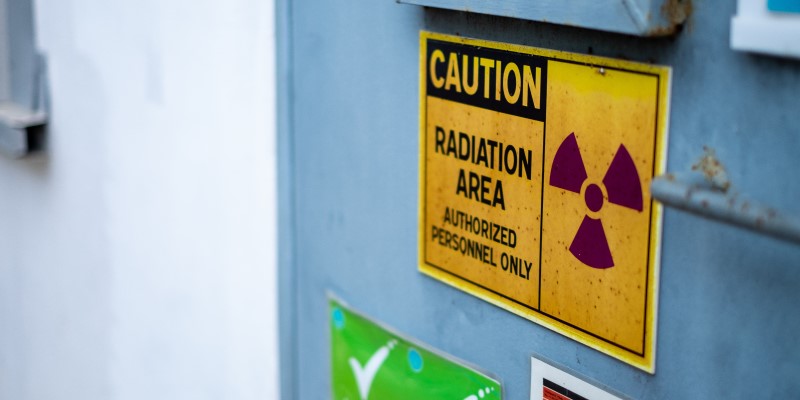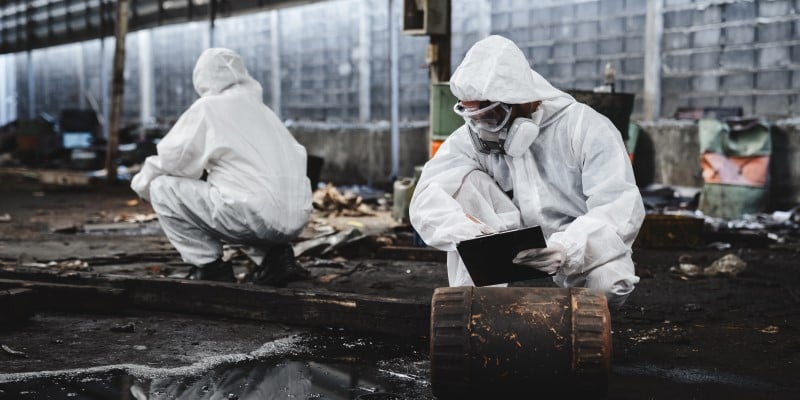
Argon’s Steven Pike considers what radiation sources are and why despite their application in everyday life, the existence of radiation sources should not be taken for granted.
Sometimes, even the mention of the word radiation can strike fear into the minds of people. Anyone who has seen images from Hiroshima, grown up in the shadow of the Cold War with the imminent threat of millions of deaths from radiation poisoning or who knows anything of the nuclear catastrophe at Chernobyl understands the dangers that radiation energy can present.
However, the truth is that radiation is all around us. A great deal exists in nature, but an increasing amount is generated by human activities for peaceful and not so peaceful purposes.
So, it’s worth pausing to understand where radiation comes from and, despite its dangers, why we embrace its power in everyday life.
Radioactive sources contain radioactive material of a particular radionuclide (an unstable form of an element emitting radiation), which can vary based on the application for which the source was manufactured. These sources emit ionizing radiation, typically in the form of alpha and beta particles, gamma rays or neutron radiation. Most people are aware of the effects of exposure to an uncontrolled radiation source. On the unprotected body, it can lead to injuries that resemble burns, but do not heal in the same manner. Additional symptoms include nausea, diarrhoea, and vomiting.
Until the 1950s, apart from expanding military applications, only radionuclides of natural origin such as Radium-226—an isotope of radium used in some cancer treatments—were available. But today, radionuclides artificially produced in nuclear facilities and accelerators, including Caesium-137, Cobalt-60, and Iridium-192, are extensively used. Around the world, these radioactive sources are used for medical, industrial, agricultural, research and educational purposes. In short, radioactive sources are everywhere.
To give some examples, radioactive sources are used to kill bacteria in food, sterilise medical supplies and equipment, treat cancer and other diseases, map sub-surface sources of water, integrity testing of mechanical structures and measuring soil density for construction projects. The list goes on.
Types of Radioactive Sources
As may be expected, radioactive sources include a range of different radionuclides and amounts of radioactive material.
-
Sealed source: A sealed radioactive source refers to material that is either permanently encapsulated or closely bonded into a solid form, strong enough to prevent leakage while allowing controlled emission of ionizing radiation. These sealed sources generally contain high concentrations of radioactive material but in a small volume. A sealed source has many applications in medicine, such as cancer treatment but also is used for the operation of research laboratory equipment.
-
Unsealed source (sometimes referred to as an Open Source): An unsealed radioactive source, as the name suggests, involves radioactive material that is not encapsulated or bonded into a solid form. These sources typically exist as powder, liquid, or gas and are widely used in biological research and medicine. One such example is radiotherapy treatment for cancer, where unsealed sources are injected or ingested in very small quantity into the body to target specific locations, organs, or tissues. This type of nuclear application in medicine has required high standards of management with new and supporting skill sets providing the ability to safely decontaminate leakage however small. Elsewhere, in industry, unsealed sources can be used for leak detection as a radioactive tracer.
-
Orphan source: The term 'orphan' refers to a radioactive source that is no longer under regulatory control. The reasons for this vary and may include historical and economic factors, leading to insufficient regulatory oversight or none at all. Such sources may have been abandoned, lost, misplaced, stolen, or transferred without proper authorisation. These sources likely represent the greatest danger to an unwitting general public and have historically led to accidents involving serious radiation exposure.
Safety and Security of Radioactive Sources
Concern over accidental radiation exposure, including in the metal recycling and production industries, as well as intentional unauthorized acts involving radioactive sources, has led to international efforts to create codes of conduct. These are based on IAEA guidelines, which all signatory countries use in the development and harmonization of policies, laws, and regulations regarding the safety and security of radioactive sources. However, these guidelines are non-binding, meaning that each country is responsible for the regulatory control of radioactive sources from initial production to final disposal. Given the global increase in the use of radiation sources, this presents a significant challenge.
In countries where the jurisdiction over radiation sources is historically poorly regulated, the danger of a serious accident involving ionising radiation increases significantly.
Preparing for the Unexpected
The proliferation of radiation sources is such that even the tightest regulatory controls can result in mishap, validating the need for a controlled and thorough response by trained responders. In parts of the world where discovery of an economic prize and lack of knowledge of the silent danger may precipitate even worse disaster then the need to respond rapidly and decisively, perhaps with international assistance, is even greater.
Radiological detection equipment is now widely available, and most civil authorities are alert to the dangers and have well-prepared plans and procedures to deal with an expected radiation source hazard. But these plans are only as good as the training and preparation provided to responders who are on the front line of a radiological hazard event.
Organizations tasked with meeting these challenges are increasingly turning to simulation equipment and techniques to train their teams in surveying, risk assessment, analysis and disposal of unwanted radiological hazard. Argon Electronics is a leading manufacturer of radiological training simulation equipment and works globally with clients to provide the ability to train their people to deal with unforeseen radiological events.
Such support capabilities are critical to ensure that the increasing use of radioactive sources does not result in unforeseen consequences on an unexpecting public.







